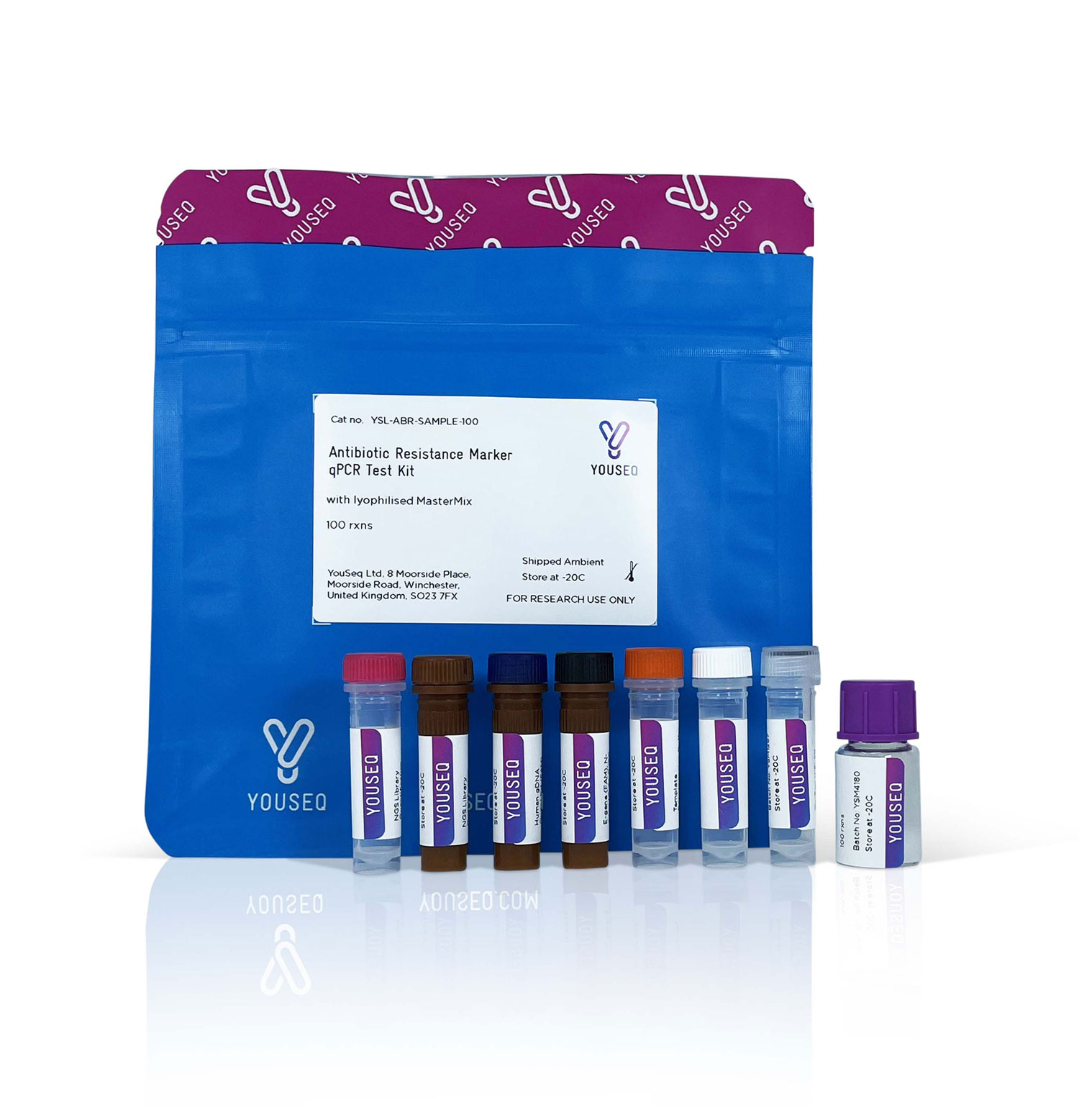
A complete qPCR kit for the detection of Fluoroquinolones (qnrS) Resistance
Fluoroquinolones (QNRs) resistance is a critical issue in the medical and veterinary sectors, with bacteria developing resistance to this class of antibiotics. Resistance to QNRs can lead to treatment failure, increased healthcare costs, and the spread of multidrug-resistant infections. The ability to detect QNRs early is essential to prevent the further spread of antibiotic resistance and to ensure effective treatment of bacterial infections.
YouSeq's qPCR kit to detect Fluoroquinolones (QNRs) resistance allows for rapid and accurate identification of bacterial strains with this resistance marker. Early detection of QNRs resistance can help clinicians choose appropriate antibiotics and prevent the spread of multidrug-resistant bacteria, ultimately improving patient outcomes and reducing healthcare costs.

Price on enquiry
Order nowFor Research Use Only. Not intended for diagnostic use.
Contents
Endogenous control primer/probe
qPCR MasterMix
Positive control template
DNase/RNase free water
Template resuspension buffer
ROX passive reference
Technical specification
Efficiency: 90-110%
Run Time: Approx 1hr30 (dependent on instrumentation)
Target Marker: FAM labelled
Endogenous Control: VIC/HEX labelled
Product variants
YS-ABR-qnrS-100 : Frozen version for dry ice shipping
Pseudonyms
QNRs resistance; Fluoroquinolone resistance; Antibiotic resistance; Multi-drug resistance; Superbug; MRSA; E. coli; Salmonella; Streptococcus; Klebsiella; Pseudomonas aeruginosa; Staphylococcus aureus; Tuberculosis; Gonorrhea; Chlamydia; Campylobacter; Acinetobacter baumannii; Enterococcus; Neisseria meningitidis; Haemophilus influenzae; Proteus mirabilis; Mycobacterium tuberculosis; Yersinia pestis; Legionella pneumophila; Shigella; Clostridium difficile; Enterobacter aerogenes; Bordetella pertussis; Helicobacter pylori; Listeria monocytogenes; Vibrio cholerae; Stenotrophomonas maltophilia; Bacteroides fragilis.